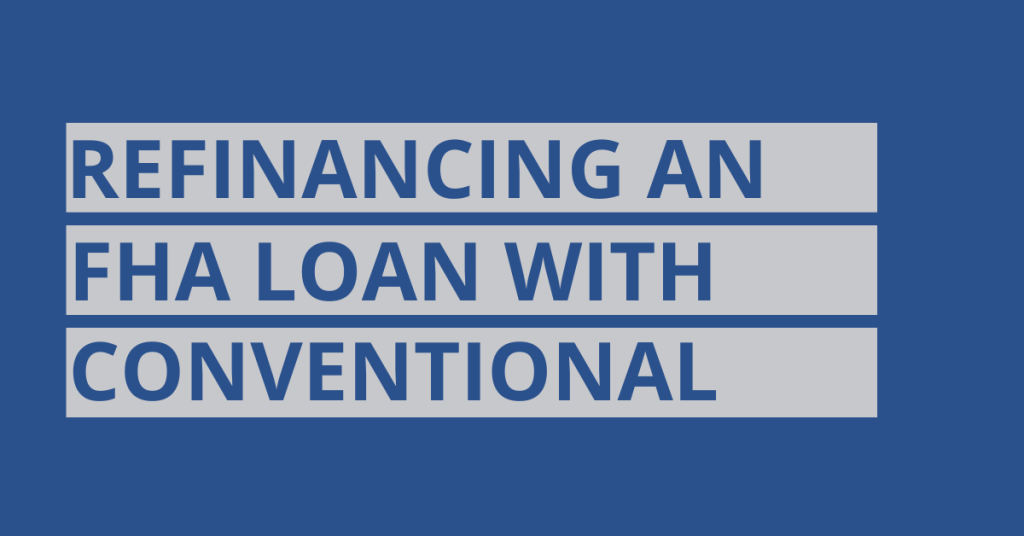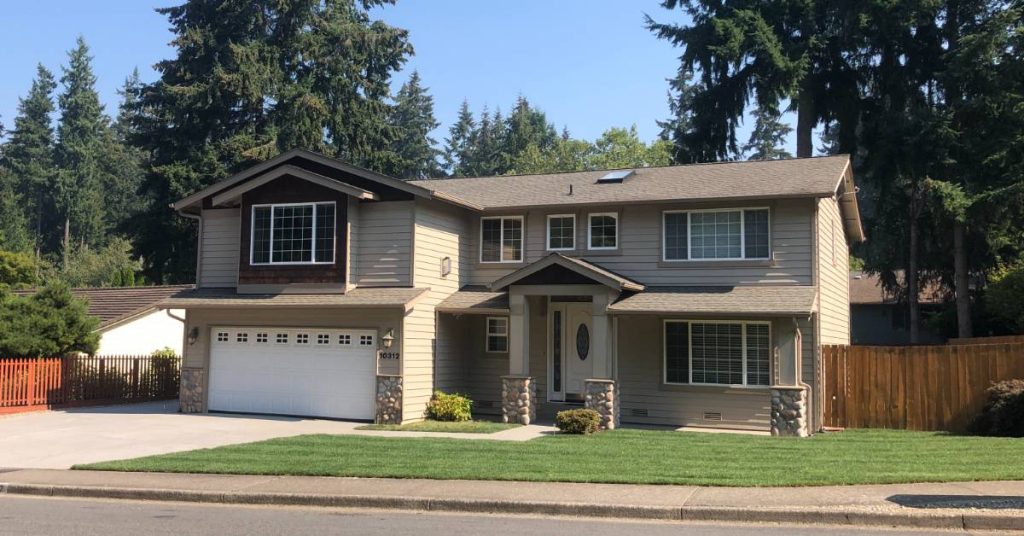A few years into your FHA loan, you might wonder if you can remove the monthly mortgage insurance (MIP, sometimes called PMI).
The answer is yes. Sometimes you can remove mortgage insurance right away with a refinance, but sometimes you can refinance to enable PMI cancelation in the future.
Plus, there are plenty of other benefits of refinancing from FHA to conventional. Here’s more about your options.
See if you can save money with a conventional refinance.
FHA mortgage insurance removal immediately
If you have 20% equity in the home, you can refinance into a no-PMI conventional loan immediately.
For example, your home is worth $300,000 and your new refinance loan will be $240,000. You would not need PMI. The loan amount is 80% of the value.
The process is simple. Apply for the conventional refinance and supply income and asset documentation.
The lender orders the appraisal and pulls your credit. The mortgage is underwritten and in few weeks, you have a conventional loan with no PMI.
But what if you don’t have enough equity yet to cancel mortgage insurance? In that case, consider setting yourself up for future PMI cancelation.
Set yourself up to cancel PMI in the future
If you have 5-15% equity in the home, you still have options.
You could refinance into a conventional loan with PMI. Why would you do that? Because conventional PMI is cancelable without a refinance. FHA mortgage insurance is required as long as you have the FHA loan.
Once you have a conventional loan, you are set up to cancel PMI in the future.
When the time comes, reach out to your servicer. That is the company to which you make payments. You can request PMI cancelation when:
- You’ve paid down the loan to 80% of the appraised value at the time of the refinance
- You have had no 30-day late payments in the past 12 months or 60-day lates in the past 24 months
- Certify there are no second mortgages on the property
- You provide an appraisal showing the property value has not decreased from the original appraised value
And, to be true, the above doesn’t need to be a request. The servicer is legally required to cancel your mortgage insurance if you meet the above criteria, says the CFPB.
If you’d rather not supply an appraisal, you can cancel PMI when the loan balance falls below 80% of the original value based on the amortization schedule.
Canceling based on future higher value: Once you’ve had the conventional loan for two years, you can request PMI cancelation when you reach 75% loan-to-value based on the current value at the time. Or once five years hits, you only need an 80% loan-to-value based on a current appraisal.
Check your conventional refinance savings.
Conventional refinance requirements
Conventional loans are harder to qualify for than FHA. Some applicants won’t be approved for a conventional refinance even though they were approved for an FHA loan, but it’s still worth applying.
- 620 credit score
- 45% debt-to-income ratio
- 5% equity in the home remaining after the refinance (20% to avoid conventional PMI)
- At least one borrower is currently on title
- You’ve owned the property six months if taking cash out or paying off non-mortgage debt
Can you use the new appraised value to cancel FHA MIP?
Yes, you can use the home’s current value for the new conventional refinance, helping you remove FHA MIP.
The lender does not review the value of the home at the time of the purchase as long as you are not taking extra cash out of the refinance.
For example, you purchased a home with an FHA loan two years ago for $300,000. The current loan balance is $290,000. You’ve remodeled the home, bringing the value to $362,500. You now have 20% equity and can get a no-PMI conventional loan.
Keep in mind, though, that you need additional equity in the home to wrap in closing costs. In the example above, say you add $5,000 in closing costs to the new loan. The refinance loan would be $295,000 and the new value would need to be about $369,000.
Other benefits of refinancing to a conventional loan
Removing FHA MIP isn’t the only reason to refinance to a conventional loan.
Take cash out: Conventional loans let you take additional cash from the refinance up to 80% of your home’s current value. FHA loans have a cash-out option as well, but you’ll pay upfront and monthly mortgage insurance.
Get a lower rate: If mortgage rates drop or your credit score has improved, you might capture a lower rate and payment with conventional, all while eliminating FHA mortgage insurance.
Get lower PMI: If you don’t have enough equity to eliminate mortgage insurance, your new conventional PMI could still be lower than your current FHA MIP.
No upfront MIP fee: You don’t incur the 1.75% FHA upfront mortgage insurance fee with a conventional refinance.
Do you get a refund of FHA upfront mortgage insurance?
Unfortunately, you do not receive a refund of the 1.75% upfront mortgage insurance fee unless you refinance with another FHA loan within three years.
Related: FHA MIP Refund Chart
This is one drawback to FHA MIP removal. You have to refinance into a conventional loan, which means you lose the 1.75% fee that you paid when you received the FHA loan.
Over time, though, saving $100, $200, or even $300 per month in FHA mortgage insurance is worth it.
Refinancing into conventional vs FHA-to-FHA refinance
Refinancing with a conventional loan isn’t always the best move. If your goal is to simply take advantage of mortgage rates that have dropped recently, consider an FHA Streamline refinance.
An FHA Streamline offers:
- No appraisal
- No credit check
- No income documentation
- Bank statements only to show proof of funds to close
- A partial FHA MIP refund if refinancing within 3 years
You can also qualify for an FHA refinance with a lower credit score and higher debt-to-income ratio compared to conventional.
Keep in mind, though, that you’ll still have permanent monthly mortgage insurance and pay an upfront 1.75% FHA MIP fee, less your eligible MIP refund.
Check your FHA Streamline eligibility.
Using a conventional cash-out refinance to remove PMI
You can accomplish two or more goals at once by refinancing an FHA loan to conventional: remove FHA MIP and take cash out.
If you’ve owned the property for more than six months, you can use a conventional cash-out refinance to pay off the FHA loan and take cash at closing for any purpose.
The conventional cash-out mortgage requires 20% equity after the refinance, so you need at least 25-30% equity currently to get value from this refinance option.
For example, your current FHA loan is $200,000 but the property is worth $350,000. You could open a conventional refinance for $280,000 and receive $80,000 at closing, less closing costs.
You would eliminate FHA mortgage insurance at the same time.
See if a conventional refinance can help you
The best way to check whether a conventional refinance makes sense is to have a knowledgeable lender run the numbers. If there’s no benefit, there’s never any obligation to proceed.
Connect with a lender to see if a conventional refinance benefits you.




